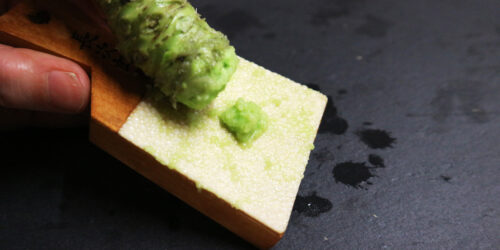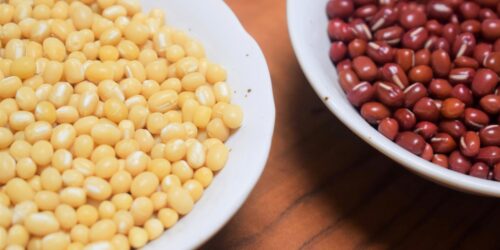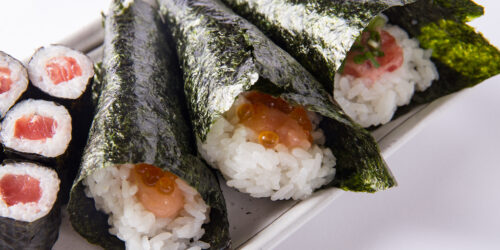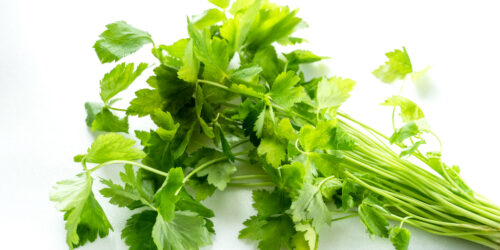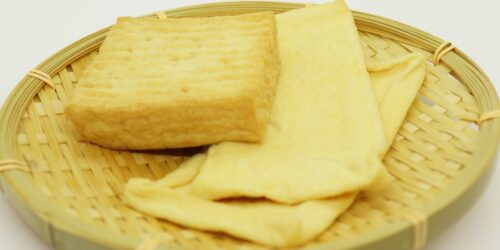What Is Kinako and How Is It Used?
What Is Kinako (Roasted Soybean Flour)?
Kinako is a powder of roasted soybeans. Heating soybeans reduces toxic substances, removes the unique odor of soybeans, and it becomes fragrant and easy to eat.
By the way, boiled soybeans contain about 60% water, and the water content of tofu is over 80%.
How about kinako…?
The water content of kinako (roasted soybean flour) is about 5%, so you can ingest soybeans much more efficiently by eating kinako.
Kinako made by crushing soybean with its skin is very nutritious, while kinako made by peeling soybeans is soft and pleasant on the tongue.
What Does Kinako Taste Like?
It has a fragrant flavor without the unique smell of soybeans. The taste of kinako (roasted soybean flour) itself without sugar is simple and light.
Adding sugar will increase the umami (delicious taste) and matches so well with the flavor of soybeans.
The flavor of kinako slightly varies depending on the roasting machine and the degree of roasting.
How Is Kinako Used?
Main uses of kinako is sprinkling on mochi (rice cake) after mixing it with sugar. Below, you can see several types of mochi desserts that are usually served with kinako.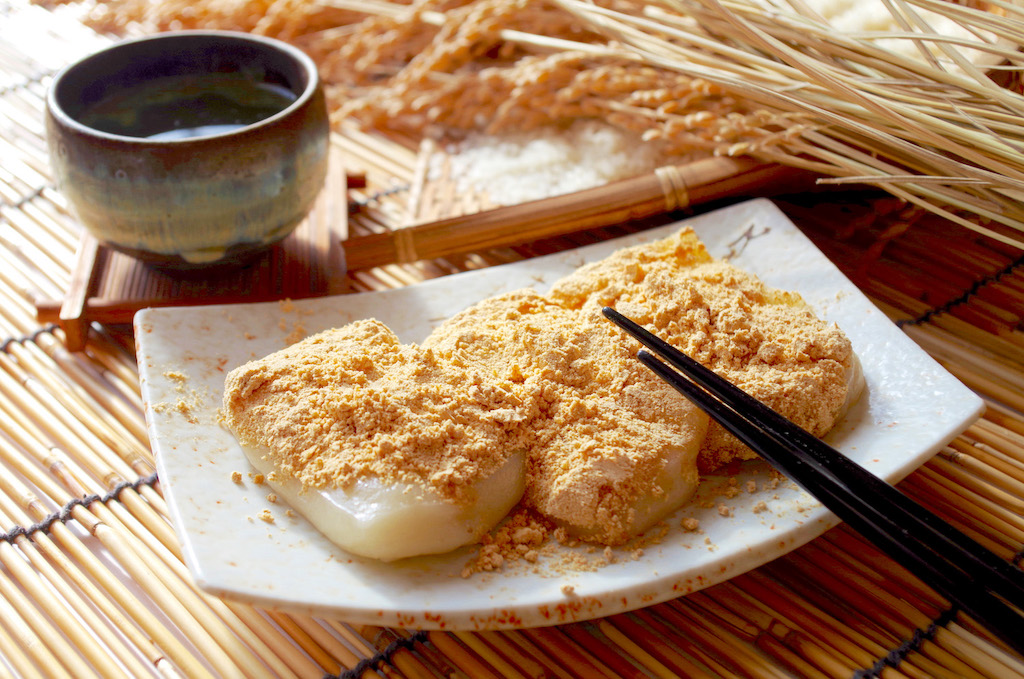 ▲Kinako Mochi
▲Kinako Mochi
Soft rice cake that is covered with kinako and sugar. It’s called Abekawa-mochi in some places in Japan
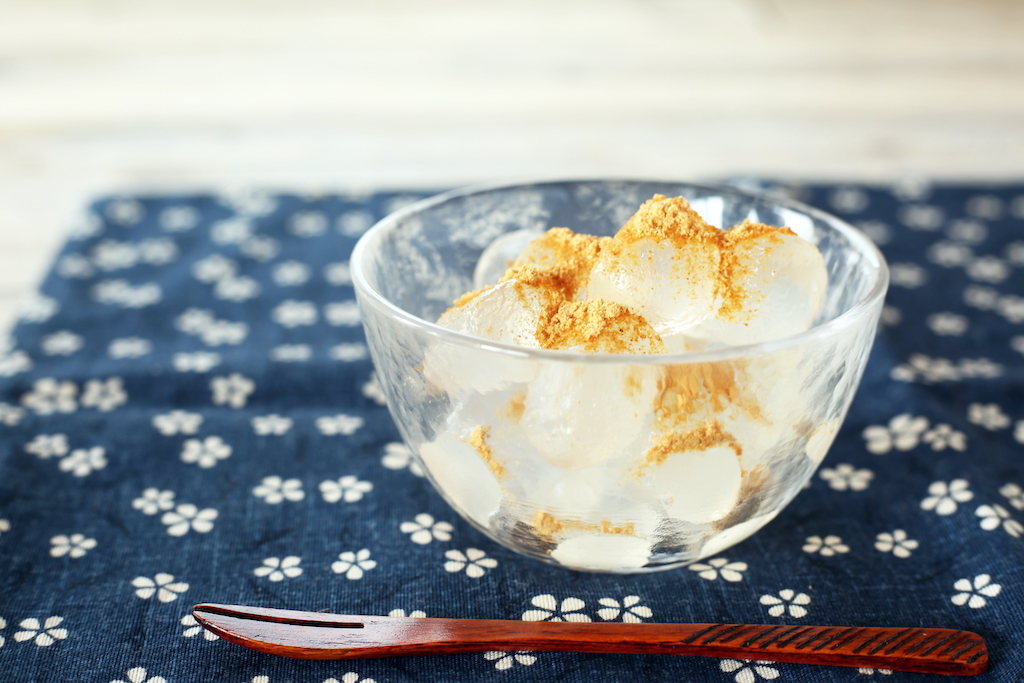 ▲Warabi-mochi
▲Warabi-mochi
Mochi made from bracken starch, sugar, and water. It’s usually eaten after pouring kinako and brown sugar syrup.
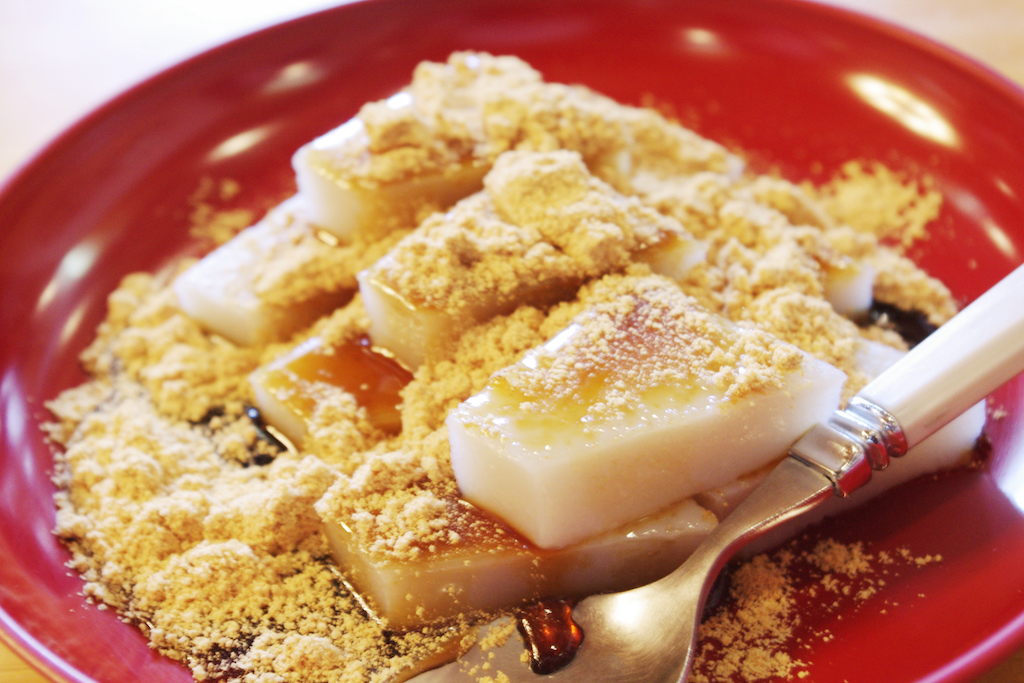 ▲Kuzu-mochi
▲Kuzu-mochi
Mochi made from kudzu starch, sugar, and water. It’s usually eaten after pouring kinako and brown sugar syrup.
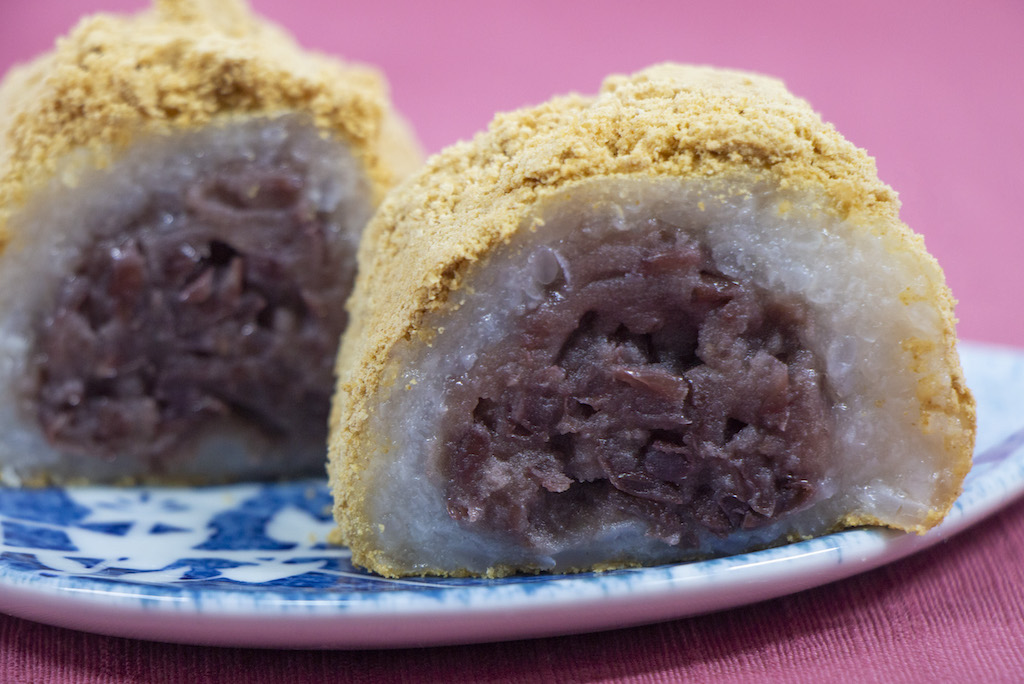 ▲Bota-mochi (Kinako Version)
▲Bota-mochi (Kinako Version)
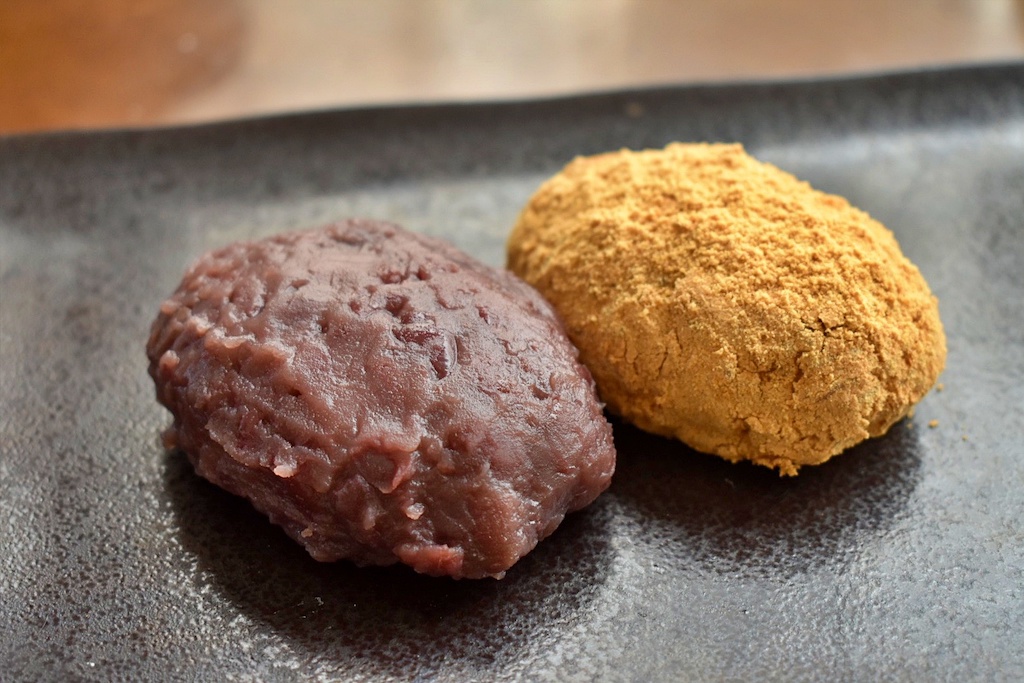 ▲Left: Normal Type (Red Bean Paste) / Right: Kinako
▲Left: Normal Type (Red Bean Paste) / Right: Kinako
It’s made by steaming a mixture of glutinous rice and rice and crush it lightly, then roll it up and cover it with red bean paste. Instead of this red bean paste, kinako is often used. The kinako flavor bota-mochi is usually filled with red bean paste.
The next two things are different from mochi dishes, but they are popular kinako food in Japan too.
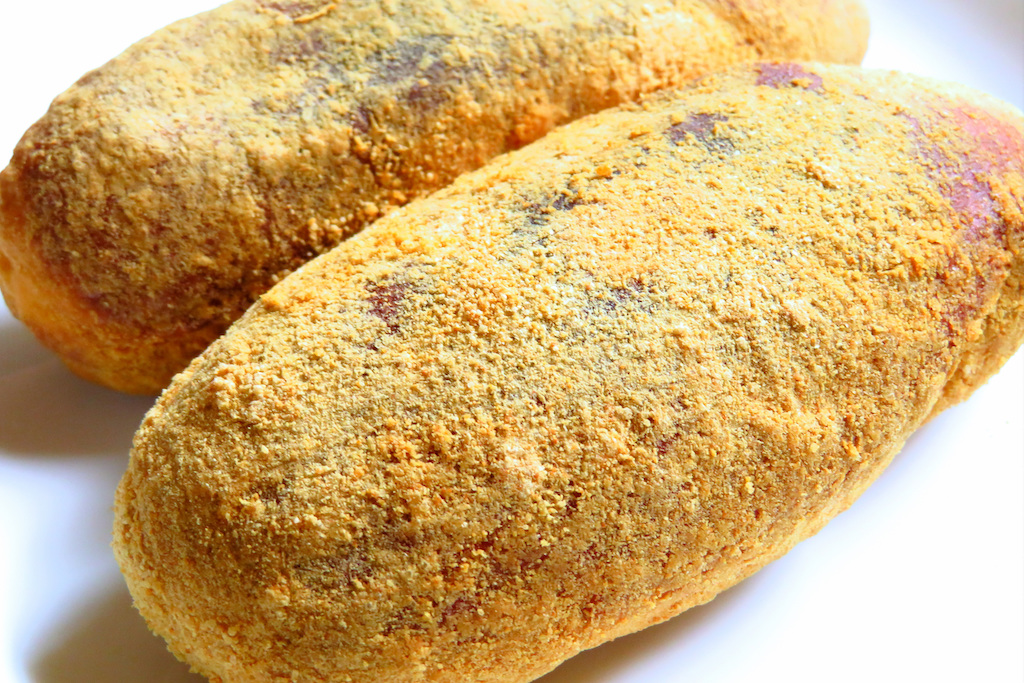 ▲Kinako Fried Bread
▲Kinako Fried Bread
Deep-fried bread covered with the mixture of kinako and sugar powder.
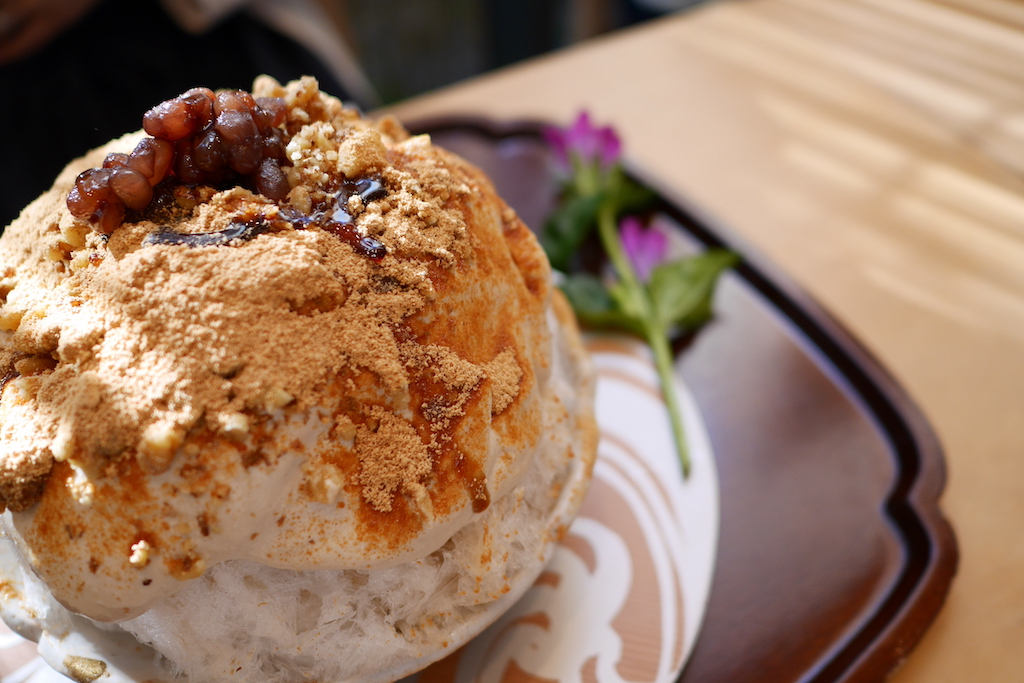 ▲Kinako Flavor Shaved Ice
▲Kinako Flavor Shaved Ice
The topping sauce for the shaved ice is kinako and brown sugar syrup. Red bean paste is also great match. It’s becoming trendy in Japan.
Besides those delicious desserts, there are various products with another material added to kinako.
For example:
kinako + black sesame
kinako + almond
kinako + soy milk
kinako + cafe latte
etc.
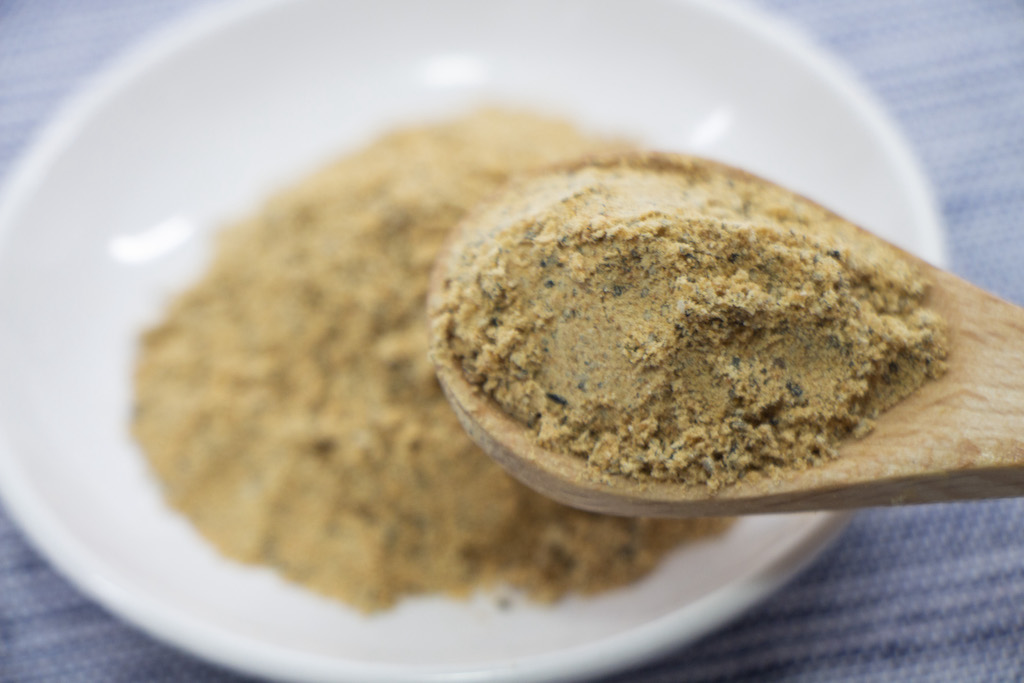 ▲Kinako Mixed with Black Sesame
▲Kinako Mixed with Black Sesame
Different Types of Kinako
When it comes to kinako, it usually refers to the one made from regular soybean (yellow soybean). There are actually 2 other types of kinako made from different color of soybeans.
Black Soybean Kinako
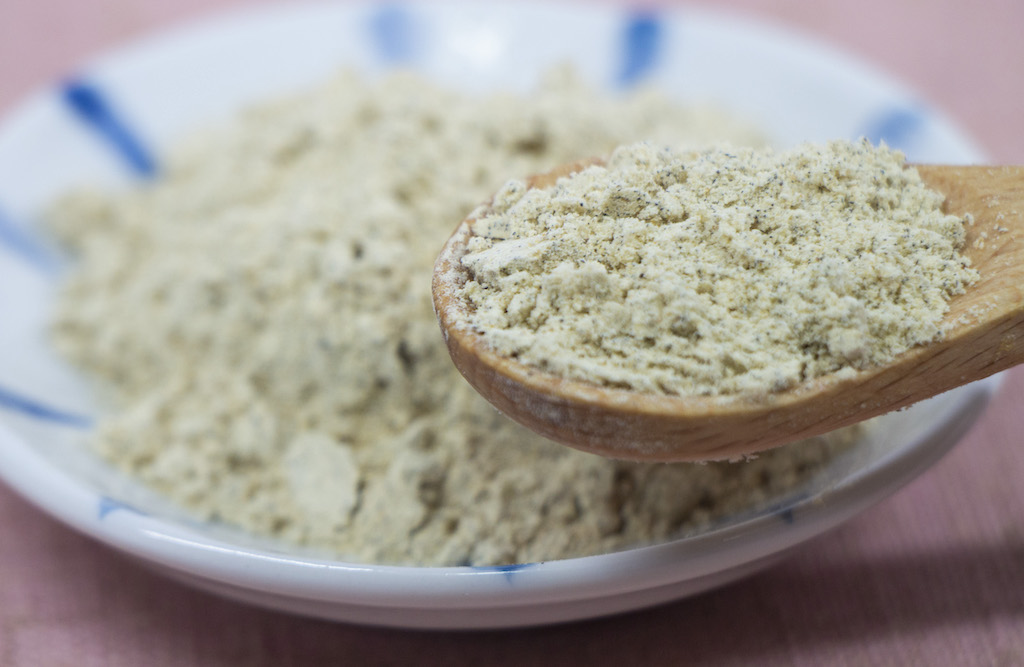
Kinako made from black soybeans is dark yellowish color with fine black spots, and has amazing scent of black soybeans.
Although it’s usually more expensive than the regular kinako, it has been very popular as a health food.
People like to put it on yogurt and drink with milk.
Green Soybean Kinako
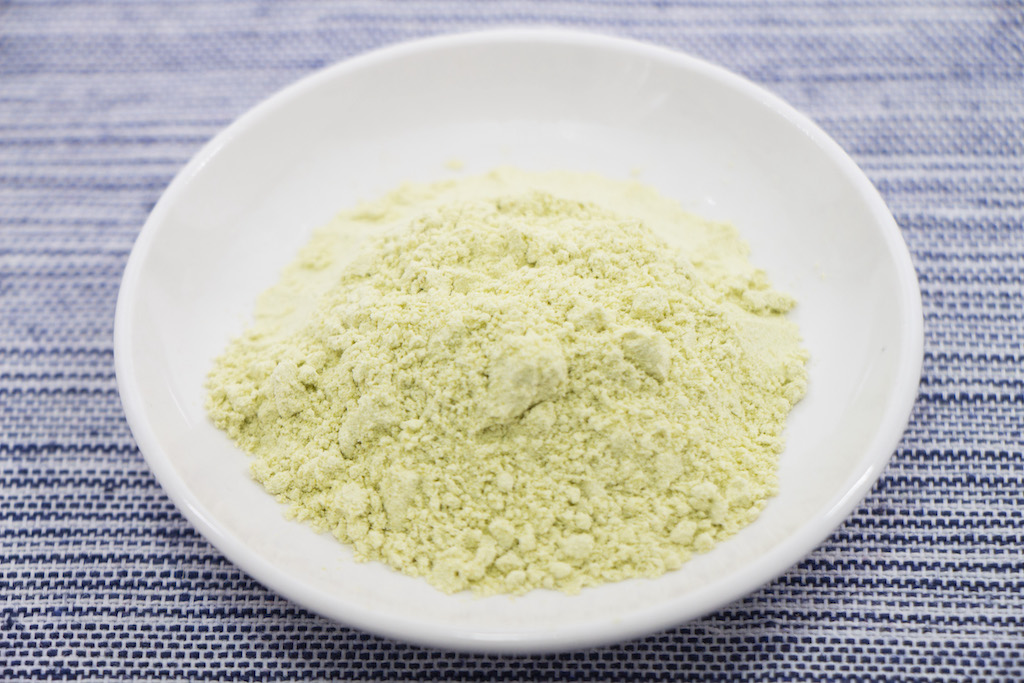
Kinako made from green soybeans is greenish yellow. It’s also called uguisu-kinako because the green color of it is like the body color of uguisu (Japanese bush warbler).
This greenish yellow kinako is mainly used when making uguisu mochi (mochi filled with red bean paste and topped with green soy flour).
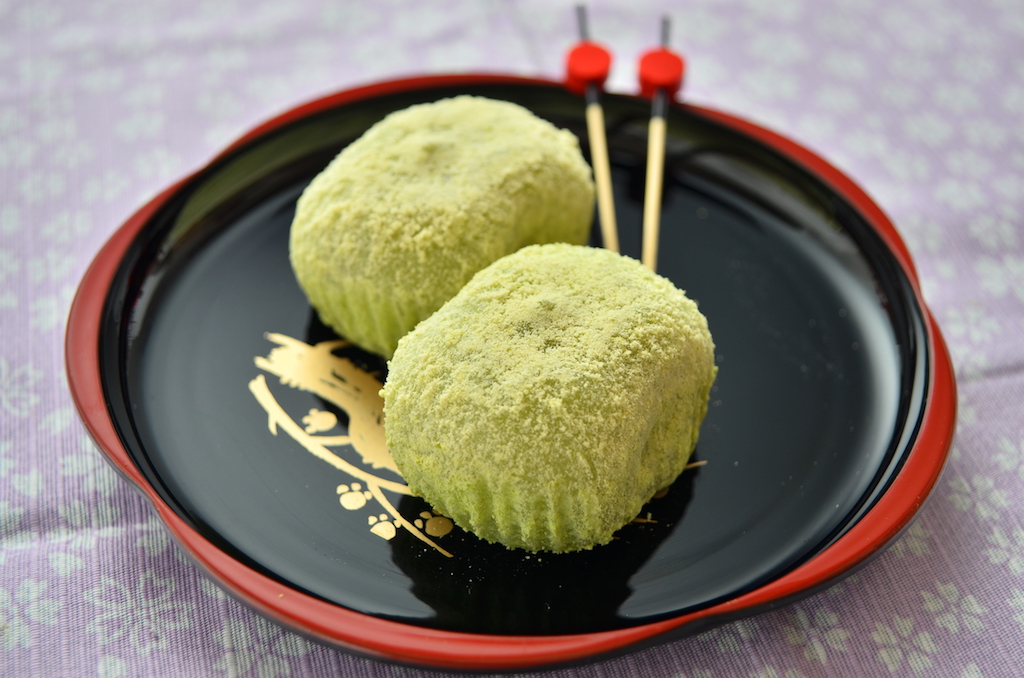
Nutrition of Kinako
Below you will find the nutrition information for a 3.5 oz (100g) of Kinako:
・Calories: 450kcal
・Water: 4.0g
・Total Carbohydrates: 28.5g
└Dietary Fiber: 18.1g
・Total Fat: 25.7g
・Protein: 36.7g
・Minerals
└Sodium: 1mg
└Potassium: 2000mg
└Calcium: 190mg
└Magnesium: 260mg
└Phosphorus: 660mg
└Iron: 8.0mg
・Vitamins
└VitaminE: 23mg
└Niacin: 2.2mg
└Pantothenic acid: 1.01mg
└Vitamin B6: 0.52mg
└Riboflavin: 0.24mg
└Thiamine: 0.07mg
What Are the Benefits of Eating Kinako
Soybeans are called “field meat” in Japan, in other words, it’s rich in good quality vegetable protein. It also contains a lot of, various types of minerals necessary for metabolism.
Great part about kinako is that the surface area of kinako increases by making it into powder. For that reason, it improves digestion and absorption, and you can efficiently take in nutrients contained in soybeans into your body.
[Typical Nutrients in Kinako]
・Soy protein
・Dietary fiber
・Soy isoflavones
・Soy oligosaccharide

